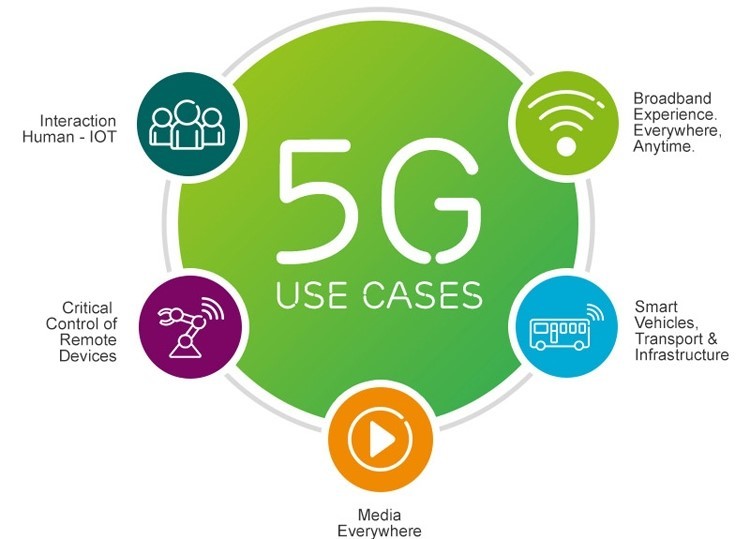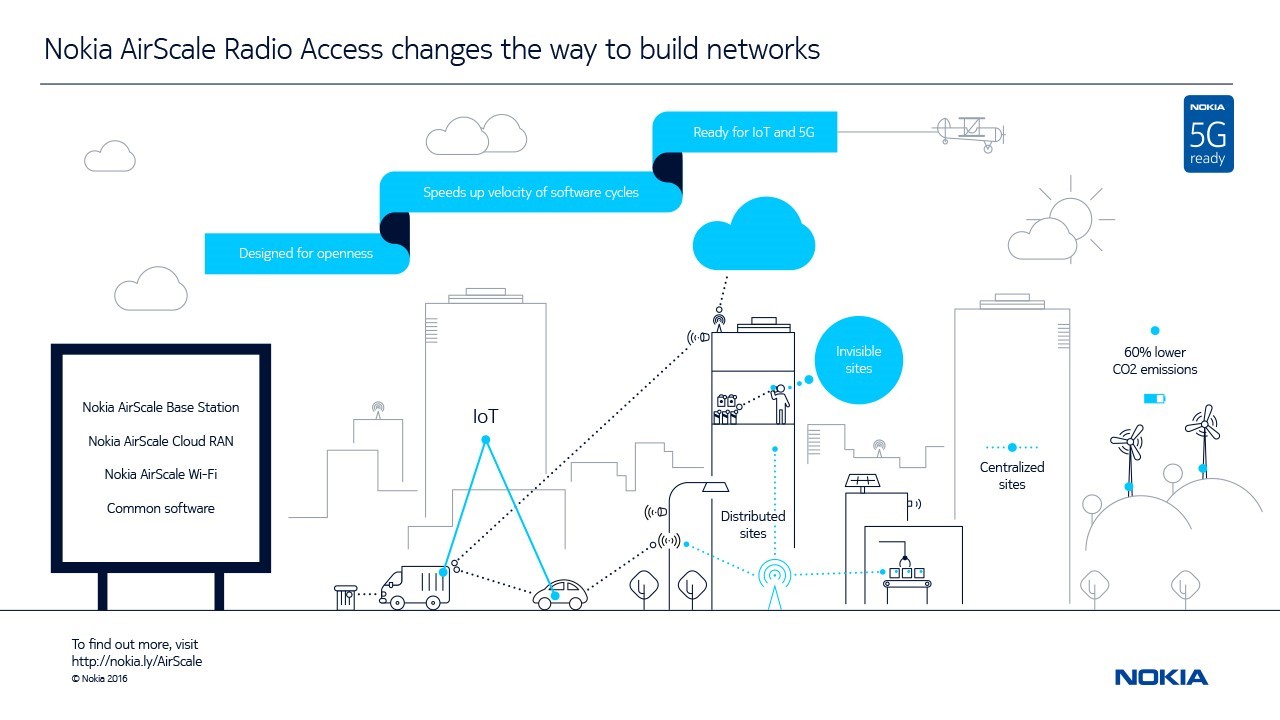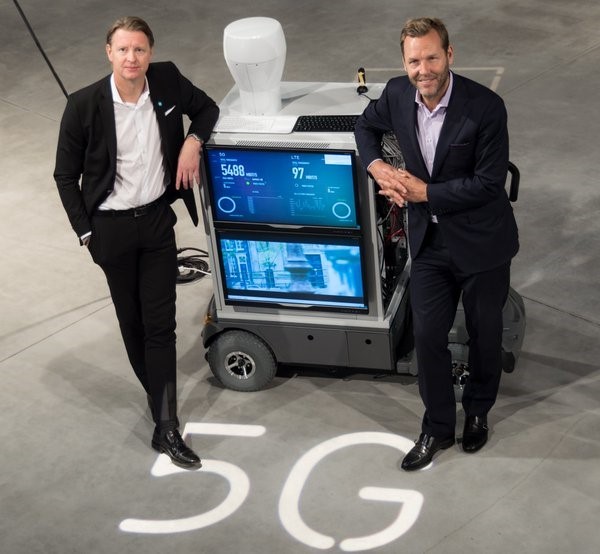What we know about 5G networks

Experts predicted a massive introduction of fifth-generation mobile communications not earlier than 2020, but the works are ahead of schedule. 5G standards can be approved within the next year, and the test launch of the network for ordinary users will take place in 2018.
About expectations about the networks of the fifth generation - justified and not very - tell about the cut.
Today, most users have enough 4G, so many people doubt the advisability of investing in 5G. Meanwhile, the developers claim that the development of the “Internet of Things” (IoT), the spread of unmanned vehicles and virtual reality tools are not enough of existing standards. The qualitative interaction of IoT elements among themselves and with users will require high speed and extremely low latency. Thanks to this, “smart” cars will be able to analyze the traffic situation in a timely manner, and VR services can transmit huge streams of information from a variety of sensors and build models in real time.

')
Fans of new technologies are waiting for the appearance of a new standard, like the followers of Apple - the new iPhone: everyone is wondering what it will be. The community managed to form a set of opinions on what the fifth generation networks will be capable of. We understand.
Assumption 1: 5G networks will be only in cities. Spoiler: yes for now.
Millimeter waves, which allow to increase the speed of data transmission tenfold, do not penetrate through solid obstacles and quickly fade out in the atmosphere. The higher the frequency, the shorter the distance at which reliable transmission is possible. An ordinary Wi-Fi router at 5 GHz in a panel house can hardly communicate in one apartment. But less high frequencies (used in 3G and 4G networks) are already occupied.
On the one hand, the technology can be used in this form. For example, to provide communication in an open stadium. However, in real urban conditions, the prototypes of 5G networks showed unsatisfactory results. The towers that provided cellular communications of previous generations could transmit a signal over a large distance, and in the 5G architecture they use small cells that were previously used in conventional transmission technology for local signal amplification. The maximum distance from the antenna to the client device in this case can hardly exceed hundreds of meters.
Now “small cells” are planned to be installed everywhere in cities: in relation to roofs and pillars. Outside the cities, building a network of "small cells" still seems inappropriate.
Assumption 2: even in cities, coverage will be poor. Spoiler: no.
So, the higher the frequency, the harder the signal is to get to the client device without distortion. An approach was proposed that combines the capabilities of modern and future networks. We are talking about the use of data transmission technologies such as MU-MIMO (Multi-User Multiple Input Multiple Output), SCMA (Sparse Code Multiple Access) and F-OFDM (Filtered OFDM ).
MU-MIMO technology provides simultaneous transmission of independent data streams to different users. This increases the efficiency of the use of the frequency spectrum, increases the data transfer rate and the number of simultaneous connections. Previously, MIMO served to optimize LTE and Wi-Fi, but only for two to four signal streams. In 5G they use Massive MIMO technology, which allows placing dozens of small antennas in mobile devices and hundreds in the transmitting station. The configuration of the station Massive MIMO includes 128 antennas. For comparison, a conventional station is equipped with 8 antennas - obviously, with an increase in the number of antennas, the technology gives a more impressive result.
Massive MIMO allows you to adapt the signal transmission in high-rise buildings. Data transmission is performed using a sophisticated digital signal processing algorithm that directs individual data streams in a space region.
In addition, various companies use their own development for 5G. So Samsung specialists in the 5G network, while driving at a speed of 110 km / h, have achieved data transfer at 1.2 Gbit / s. To do this, they used Hybrid Adaptive Array Technology. Ericsson in its tests uses tens and hundreds of antennas for transmitting multiple MIMO streams.
Huawei relies on several technologies at once: F-OFDM and SCMA.
SCMA is a method of code modulation of signals with provision of multiple access, based on sparse codes. It allows the cell to serve 2.7 times more users than 4G and reduces network latency.
F-OFDM is an OFDM signal with universal out-of-band filtering. The OFDM (Eng. Orthogonal frequency-division multiplexing) method was proposed as far back as 1966. We have already written about it in detail. But modern versions of the method suggest using non-orthogonal signals in 5G.
Assumption 3: previous generation networks will not be needed. Spoiler: no.
It should be noted that 5G is not a technological panacea, after the introduction of which 4G and 3G networks will be eliminated. On the contrary, the network of the previous generation, especially Wi-Fi, will be used in tandem with 5G. At the same time, seamless switching between networks with one device, one SIM card and one tariff plan will be provided. For example, the License Assisted Access (LAA) technology already now allows you to work on Wi-Fi frequencies when they are not used by the main consumers.
Moreover, for many tasks, 4G is quite enough: for example, for classical interaction between users and even for the operation of IoT devices, which transmit small amounts of information and rarely. They do not require high-speed connections and can work with low bandwidth networks.
Assumption 4: this is great, but so far unreal. Spoiler: no.
This summer, one of the main 5G development centers appeared in the USA. The Federal Communications Commission authorized the installation of test base stations and towers without special approval. This will save developers of fifth-generation communication time to build test networks.
In July 2016, the Commission opened the following bands for use in 5G networks: 28 GHz (27.5-28.35 GHz), 37 GHz (37-38.6 GHz), 39 GHz (38.6-40 GHz), 64 -71 GHz (leaving the possibility in the future to add frequencies above 95 GHz). The United States became the first country to provide telecom operators with this opportunity.

Corporations also carry out intensive work. Nokia made a statement that it has already prepared AirScale Radio Access base stations, which fully support 5G. Most of the functionality of these stations is implemented in software.
In 2016, in Canada, Bell together with Nokia successfully completed the first tests of fifth-generation wireless mobile networks in Canada. In this experiment, the 73 GHz band was used.
Also this year, Vodafone and Huawei tested 5G technology, speeding up the network to 20 Gbit / s (for one device). The tests covered single-user SU-MIMO (Single User Multiple Input Multiple Output) and multi-user MU-MIMO (Multi User Multiple Input Multiple Output) data transmission in the frequency range 71–76 GHz, 81–86 GHz, and 92–95 GHz.
The company Ericsson in the beginning of the year showed the first device that supports 5G. This is a 150-pound phone, stuffed with experimental components, which is powered by a huge battery. The next step is to miniaturize the device. Ericsson also stated that they had achieved stable signal reception at a speed of 7 Gbit / s in a moving car using MU-MIMO and Beamforming. According to Ericsson's plans, 5G communication services in Europe will be available in 2018, and the first test launches will begin in 2017.

SK Telecom promises to organize 5G communications for the 2018 Winter Olympics in South Korea, Verizon plans to launch a pilot project in the US in 2016. In Russia, test launches are going to hold a "Megaphone" during the World Cup in 2018.
Healthy competition among developers, corporations and states is growing day by day. The 5G network no longer seems like a fantastic future and promises to be an effective tool for business and users.
Source: https://habr.com/ru/post/309068/
All Articles